The word scrum derives from the game of rugby. A scrum (short for scrummage) is a method of restarting a play in rugby that involves players packing closely together with their heads down, attempting to gain possession of the ball. The teams are looking to solve the assignment – by running, by throwing the ball to another team member or by any other means go the distance.
Sprints, reviews, retrospectives and stand ups according to Scrum. What does it mean? We visited two ongoing projects at Chalmers Library to find out more.
Lined up in proper rows, pink and yellow post-its are covering the white board. They describe what needs to be done in the Research-project.
Rolf Johansson and Kristin Olofsson are two of the people in the project. The goal is to establish an online database where Chalmers research projects and publications are gathered and displayed.
In 2010 a change of work methods began to develop at the Library. The former ways of working were ineffective, according to systems developer Rolf Johansson.
– It was getting untenable. Different people said ”do this and do that” and the boss said something else. Someone heard about Scrum and we trained in its methodology. It didn’t take long until we saw results. Things were done immediately, says Rolf and continues:
– It’s more honest this way. The idea is to be more transparent so that the whole organization can see what is going on. With an agile method we are thinking more about visions and less about details; What do we want to achieve and what is our strategy?
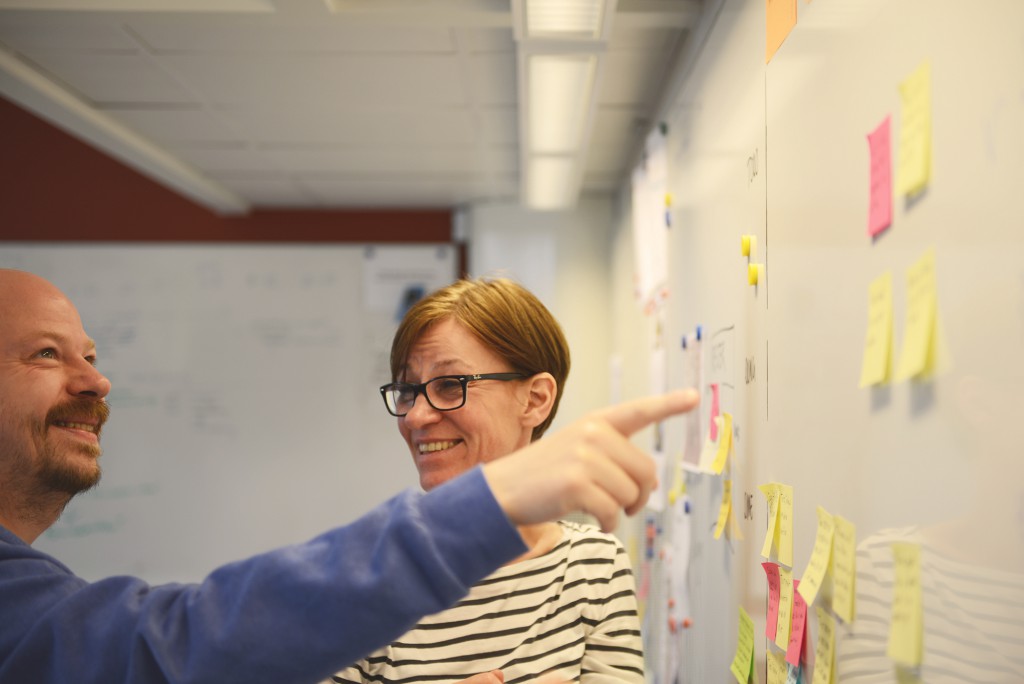
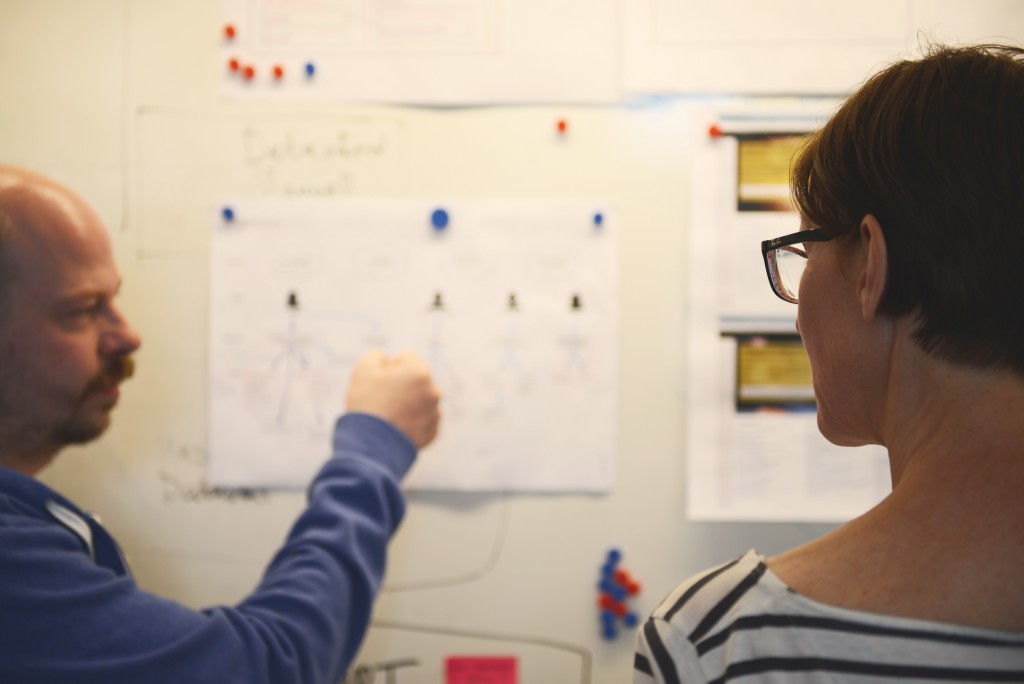
– The biggest readjustment when we decided to implement Scrum was working as a team. It’s not common amongst developers, says Rolf Johansson.
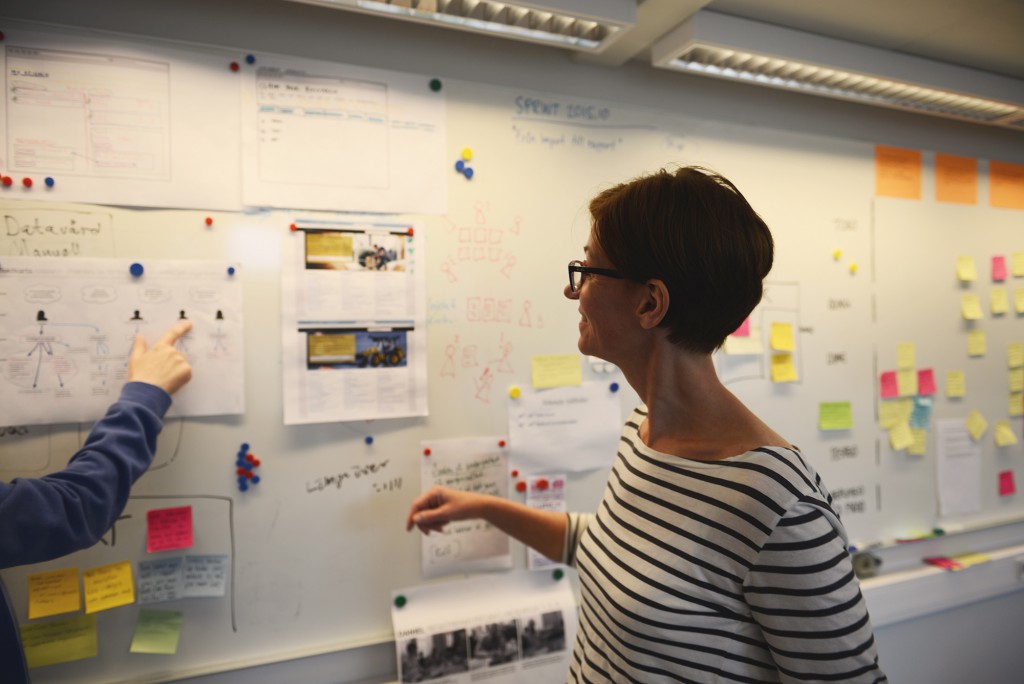
– It’s important to find out about the user experience in the beginning of a work process, to make sure we create a valuable product. We usually do that by interviewing and observing. We talk a lot about empathy and quantitative and qualitative methods, says Kristin Olofsson.
– Scrum provides us with methods to adapt to changing conditions. We have to be agile. It’s necessary, says Kristin Olofsson and remembers a workshop she participated in.
– I remember them asking if we at any point during the last six months had had to completely revise our plans after six months. Almost everyone said yes. There’s no point in planning two years ahead. If you are on the wrong path, you don’t realise that the product is bad until it’s too late to do something about it.
On the ground floor Lars Andersson and Lari Kovanen, systems developers, are working on the Chillin project. One of the walls is covered with a purple space pattern.
– It represents our endless work, says Lars and laughs.
They are, together with a few colleagues, optimizing the interlibrary loan system called Chillin. The project started off a few years ago as the previous system couldn’t meet new requirements. Their work is also done according to Scrum principles.
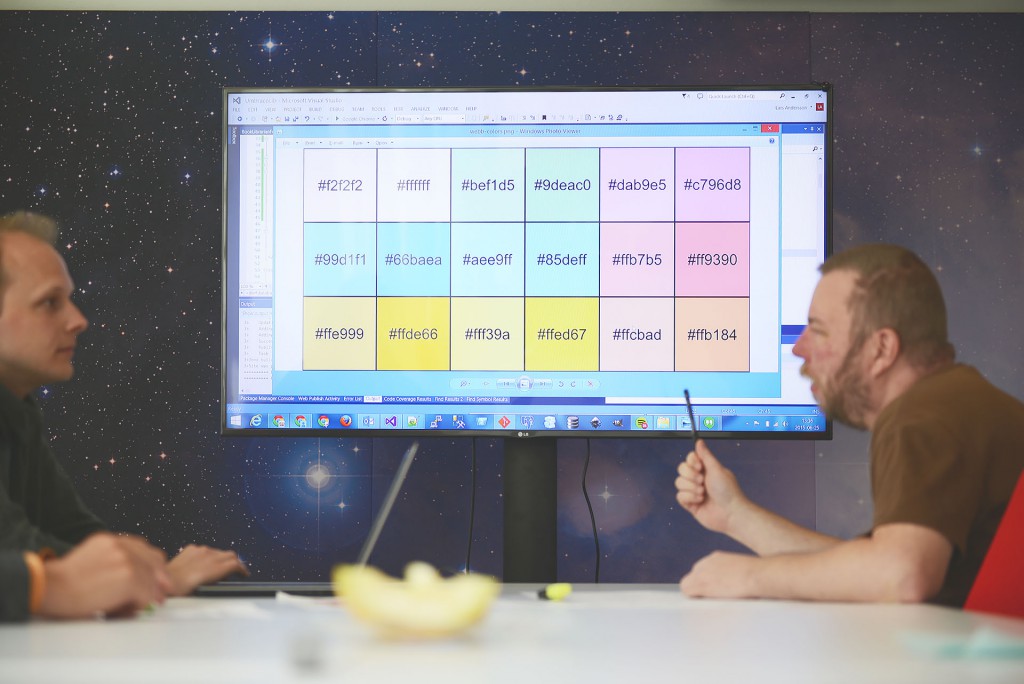
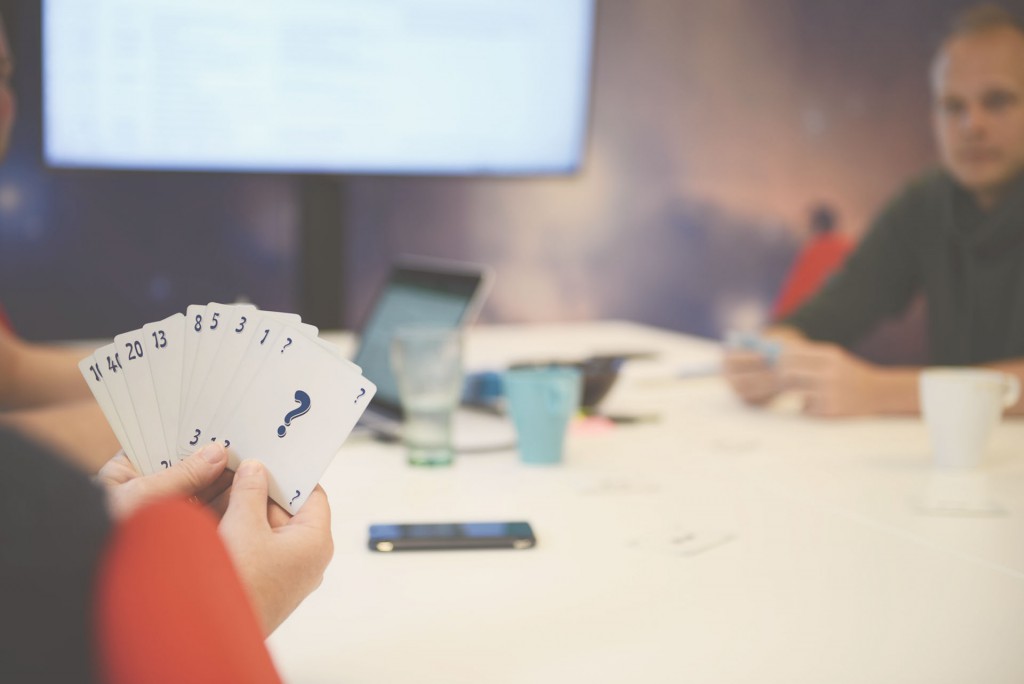
– We never get caught up in creating the wrong things, cause we have a system for continous reconcilations. If our surroundings or conditions change, we are fast to react, says Lari Kovanen.

– We work in a large team and because of that we have a lot of different angles on the project. It’s necessary to have many points of view, says Lars Andersson.
The work is divided in ”sprints”, periods of two or three weeks. In the beginning the team plan their work, creating ”user stories” – specific assignments describing what should be done during the sprint. The sprint ends with a ”retrospective” within the team and an open ”sprint review”, where the library staff is invited to participate in a discussion on the results.
– When the sprint ends there is no more time. No one can say ”I just need another day and I’ll be done”. During retrospective we talk about what worked well and what should improve. If something was not completed we discuss why, says Rolf Johansson.
The first agile project at Chalmers Library was completed in 2012 with the library’s new website. The project was a collaboration between the library and an agency, who didn’t work according to the Scrum method.
– They worked according to a traditional development methodology. But I think we inspired them, because now they have also applied an agile work method, says Lari Kovanen.
– There’s a reason why it’s a popular method. It’s a great tool when handling a complex problem, says Lars Andersson and summarizes the core of agile work methodology:
– The main principle is to respond to changes around you. Always have an eye on your surroundings and ask yourself; is this relevant?
Scrum dictionary
Scrum – a work method developed in the 1990’s by Ken Schwaber and Jeff Sutherland. It was first described as ”a flexible, holistic product development strategy where a development team works as a unit to reach a common goal”.
Sprint – a period of time, usually two to four weeks, where development work is done to deliver a potentially shippable product increment. It begins with sprint planning and ends with sprint review and retrospective.
Sprint planning – the team starts the sprint here, identifying what items from the product backlog can likely be done in the sprint and what effort is needed. Developers then collaborate in decomposing each item into smaller work items needed to deliver each item.
Sprint review – occur at the end of a sprint and is an open meeting for anyone interested in the team effort. The team presents the results and different perspectives of their work during the sprint. The team also takes valuable feedback from stakeholders.
Sprint Retrospective – a team meeting at the end of a sprint. It’s an evaluation where the whole team talks about what was good and what can be done better about the work process. The aim is to continuously improve they way the team work together.
Stand up – happens every day within the team. It’s a meeting between team members to identify what has been done since the last meeting and what the plans are to do next, to meet the sprint goal. Impediments are also identified, so they can be removed.
Product Backlog – a prioritized list of features, bug fixes and other items needed to deliver the product and turn it into something valuable for the users. Usually the items are written as user stories, explaining what is needed, who needs it and why.
User Experience (UX) – is all about aspects and methods to find out and meet user behaviour and user needs . I’ts about empathy with the user that primarily focuses on the person’s context, emotions, goals and motivations with the aim to come up with with products and services that’s gives the user value and a good user experience. Different UX methods are used for identifying different aspects, like personas, effect mapping, customer journey mapping or Lean UX.
